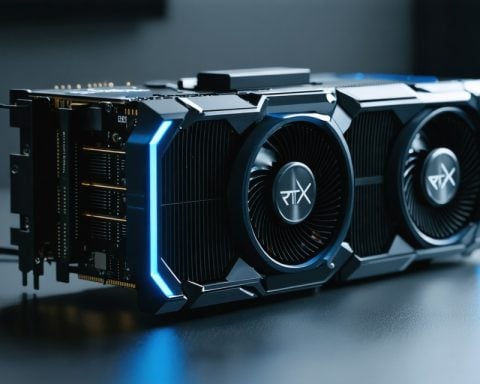AMD has revealed an exciting update to its in-driver frame generation technology called AMD Fluid Motion Frames (AFMF) 2. This new version brings significant improvements in frame rate and latency to a wide range of games. Unlike competing technologies such as AMD FSR 3 and Nvidia DLSS 3, AFMF 2 does not require in-game support, making it accessible for older games that haven’t been updated with the latest frame-generation technologies.
The initial release of AFMF in January 2024 faced some challenges, triggering anti-cheat software and lacking in image quality. However, AMD has since resolved the anti-cheat issue and aims to make a lasting impact with AFMF 2 by delivering improved performance and image quality.
One of the standout enhancements offered by AFMF 2 is a significant reduction in latency. AMD claims that it can reduce latency by up to 28%, regardless of the settings mode, resolution, or hardware used. For instance, AMD demonstrates a 28% drop in latency when playing Cyberpunk 2077 at 4K with ultra settings and a Radeon RX 7900 XTX. Additionally, even on lower-end systems like a Ryzen 8700G CPU with a Radeon 780M integrated GPU running at 1080p, there is a 12% decrease in latency in CS2.
AFMF 2 also introduces an AI-optimized control for “fallback.” This feature detects a significant amount of motion and determines whether generating a frame would compromise image quality. In such cases, the algorithm refrains from generating frames, resulting in a drop in performance but maintaining image quality. The new AI optimizations improve user options for this feature, enhancing tuning capabilities.
Furthermore, a new Performance mode has been added specifically for lower-end hardware, including integrated GPUs. This mode reduces the overhead of AFMF 2, improving high frame rate gaming experiences on a wider range of devices.
It’s clear that AMD’s AFMF 2 has the potential to revolutionize frame rate performance in gaming. However, its actual performance and image quality in real-world gameplay will ultimately determine its success. For more detailed information on similar frame generation technologies, be sure to explore our comprehensive guides on AMD FSR and Nvidia DLSS.
Additional Facts:
– AMD Fluid Motion Frames (AFMF) 2 is an update to AMD’s in-driver frame generation technology.
– Unlike competing technologies like AMD FSR 3 and Nvidia DLSS 3, AFMF 2 does not require in-game support, making it compatible with older games.
– The initial release of AFMF faced challenges with anti-cheat software and image quality but has since been resolved.
– AFMF 2 brings significant improvements in frame rate and latency to a wide range of games.
– AMD claims that AFMF 2 can reduce latency by up to 28% regardless of settings, resolution, or hardware used.
– The new AI-optimized control for “fallback” detects motion and determines whether generating a frame would compromise image quality.
– AFMF 2 introduces a Performance mode specifically for lower-end hardware, reducing overhead and improving high frame rate gaming experiences.
Most Important Questions and Answers:
1. What is AFMF 2?
AFMF 2 is an update to AMD’s in-driver frame generation technology, bringing significant improvements in frame rate and latency to a wide range of games.
2. How does AFMF 2 compare to competing technologies like AMD FSR 3 and Nvidia DLSS 3?
Unlike AMD FSR 3 and Nvidia DLSS 3, AFMF 2 does not require in-game support, making it accessible for older games that haven’t been updated with the latest frame-generation technologies.
3. What were the challenges faced by the initial release of AFMF?
The initial release faced challenges with anti-cheat software triggering and image quality, but these issues have been resolved.
Key Challenges or Controversies:
One key challenge or controversy associated with AFMF 2 could be the actual performance and image quality in real-world gameplay. While the technology shows potential, its success will be determined by how it performs in practical gaming scenarios.
Advantages of AFMF 2:
– Improvements in frame rate and latency in a wide range of games.
– Compatibility with older games that do not have in-game support for frame-generation technologies.
– Reduction in latency by up to 28% regardless of settings, resolution, or hardware used.
– AI-optimized control for “fallback” enhances tuning capabilities.
Disadvantages of AFMF 2:
– The previous version of AFMF faced challenges with anti-cheat software and image quality, which could raise concerns about potential issues with AFMF 2.
– The actual performance and image quality in real-world gameplay are yet to be determined, which could be a disadvantage if the technology does not live up to expectations.
Suggested Related Links:
– AMD Official Website
– AMD Fluid Motion Frames
– AMD FSR Guide
– rNvidia DLSS Guide



















